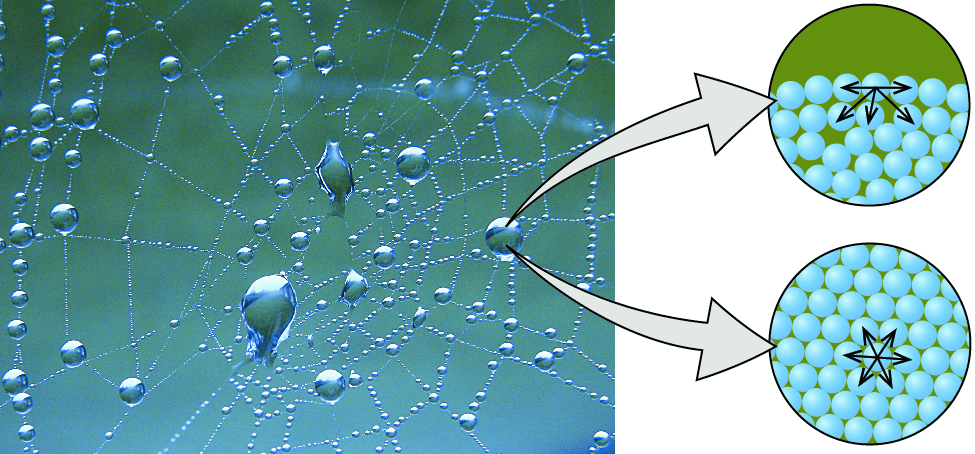What is cohesion? What is the difference between cohesion and adhesion? How does cohesion work? Information on cohesion.

Cohesion; is the force of attraction acting between the particles of any given mass. The cohesive forces interact between adjacent parts of a single body and are present throughout the interior of the body. Because of them the particles resist separation; that is, the mass resists physical disintegration.
“Adhesion” also refers to forces of attraction between particles, but it is used only when these forces act aeross a surface separating two different masses. Thus the forces between molecules in a drop of water are cohesive, while the mutual attraction between water and glass represents adhesion.
Cohesion in gases is always much less than in liquids or solids, and cohesion in liquids is usually less than in solids. The forces of cohesion in gases are known as Van der Waals forces, and they are short-range electrostatic dipole interactions between closely neighboring molecules. In nonpolar liquids and solids, the cohesion is also of the Van der Waals type. In substances made up of polar molecules (molecules in which the centers of positive and negative charge do not coincide), the positive end of one molecule is attracted to the negative end of a close neighbor, thus setting up cohesive forces different than those of the Van der Waals type.
The nature of cohesion in crystalline solids depends on the type of crystal structure present. In a molecular crystal lattice, such as that of carbon dioxide in the form of dry ice, the structural unit is the molecule, and the cohesive forces are Van der Waals forces. In an ionic lattice, such as that of sodium chloride, the structural units are ions of opposite charge, and the forces of cohesion are electrostatic coulomb forces. In a covalent lattice, such as that of diamond, cohesion results from the sharing of electrons between atoms, while in metallic lattices, it results from electrostatic attraction between metallic ions and a sea of valence electrons.
The ultimate strength of a material is not a reliable measure of the true strength of its cohesive forces. A typical sample of quartz, for example, consists of many crystals, each of which is held together by strong cohesive forces. However, the separate crystals are bound to each other by relatively weak adhesive forces, and it is these forces that limit the strength of the whole sample.
mavi